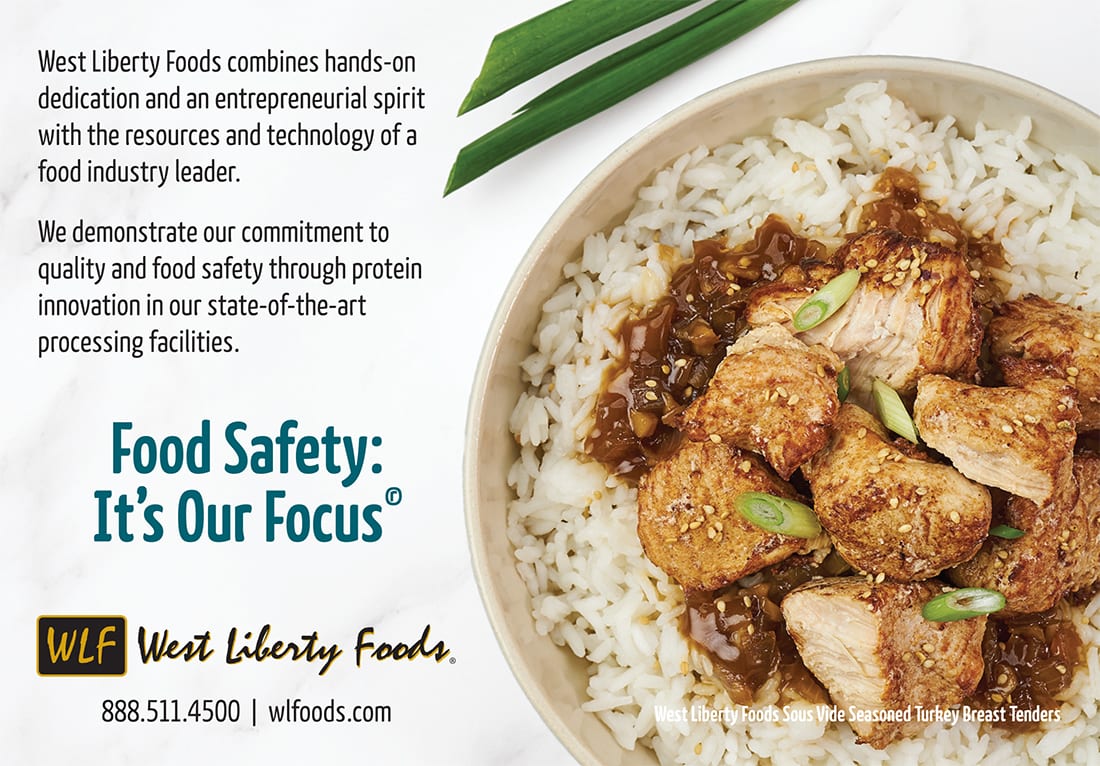Commentary
FIGHT FOR FOOD SAFETY

disappear
Watching meat and poultry recalls
Cell-cultured meat products
continue to make headway
FOOD INDUSTRY COUNSEL LLC
By SHAWN K. SteveNS
By now, most of us are familiar, at least conceptually, with food made from cultured animal cells. This refers to meat that is “grown” in a controlled environment, rather than as part of a living animal. It has been referred to by a variety of names, including “lab meat.” While the concept of “lab meat” remains less than desirable to many, and the subject of at least some consumer scorn, that will likely change over time as these products are increasingly produced in a manner that is readily indistinguishable from traditionally sourced products. Of course, that will also require meeting and exceeding other types of benchmarks by which we judge animal-derived products, such as safety, taste, texture, nutrition and cost.
Clearly, many hurdles remain to be cleared, and there is no way to know if cultured meat products will ever become widely available. For years, the development of cell-cultured products has languished due to technological and scalability issues. That may be changing, however. Advancements in cell culture technology have brought producers to the threshold of bringing new products to market.
On Nov. 16, 2022, the Food and Drug Administration announced the completion of its first pre-market consultation for a human food made from cultured animal cells. According to the FDA Constituent Update, the agency evaluated the information submitted by UPSIDE Foods related to the safety of its products, and had no further questions or concerns regarding the firm’s formal safety-related conclusions. UPSIDE plans to utilize “animal cell culture technology to take living cells from chickens and grow the cells in a controlled environment to make the cultured animal cell food.”
In addition to meeting FDA requirements applicable to the manufacture and sale of food, including cell culture approval and registration, UPSIDE will also have to obtain a grant of inspection from the U.S. Department of Agriculture’s Food Safety Inspection Service. Likewise, the products must receive the USDA-FSIS mark of inspection in order to be introduced into commerce. So, again, this is but a single step of many that must be cleared before this (or any other) product enters the market.
The FDA completes its first pre-market consultation for a human food made from cultured animal cells
As of today, there are no consumer-facing foods made from cultured animal cells available in the U.S. grocery market. For that to happen, manufacturers will not only need to obtain the required approvals and regulatory permissions, but will also need to significantly scale up production. Thus, it will likely be years before cell-cultured products are even an option for consumers, much less offering meaningful competition to animal-derived meat products.
In the meantime, we’ll continue to watch with anticipation as these new products continue to look for ways to successfully enter the market.

